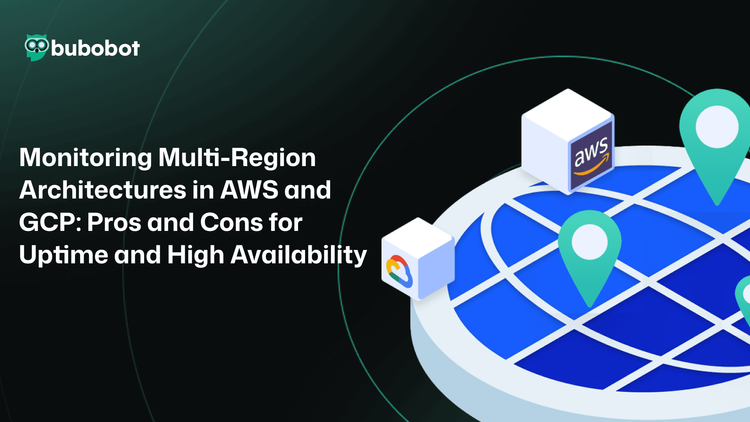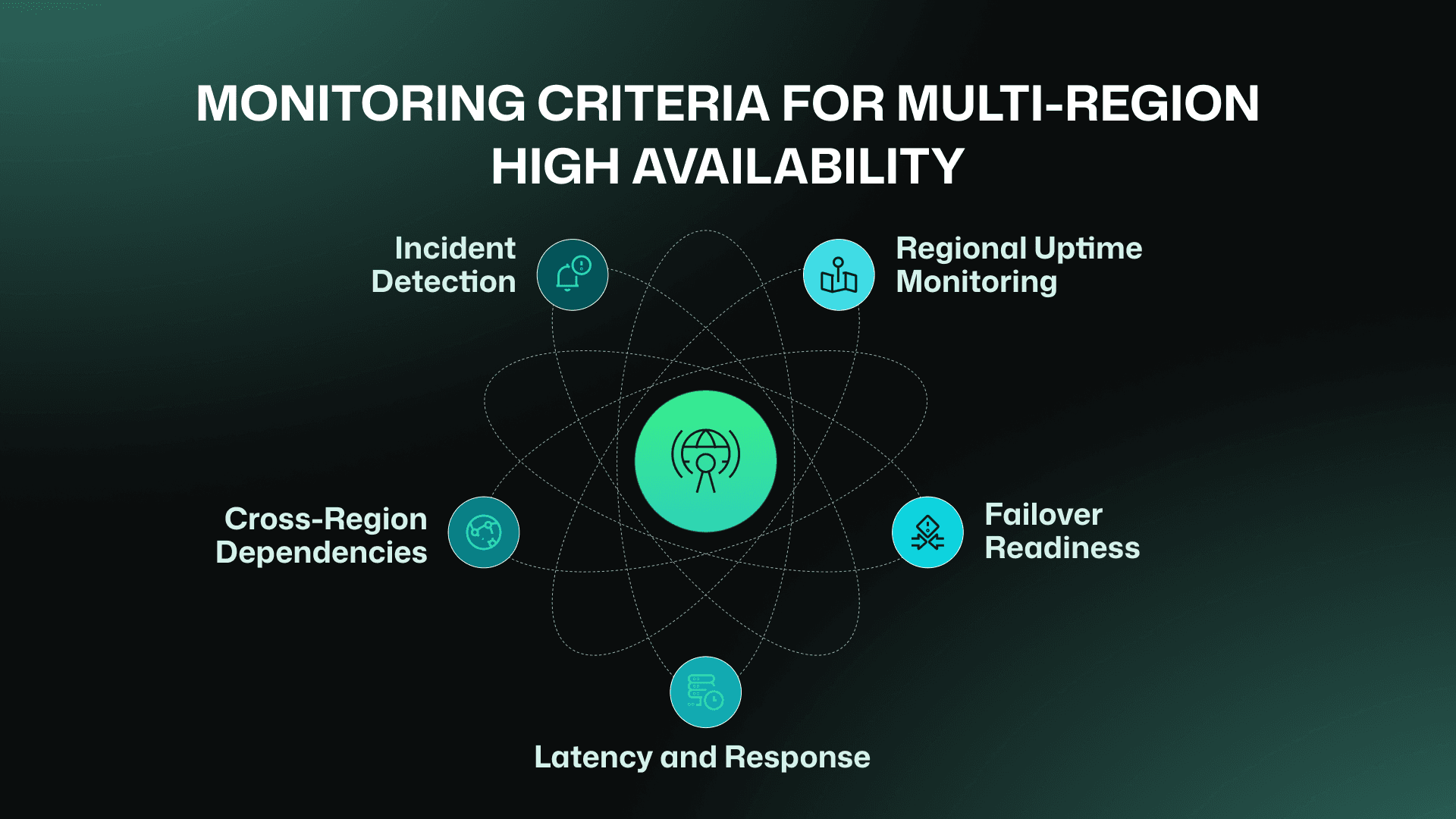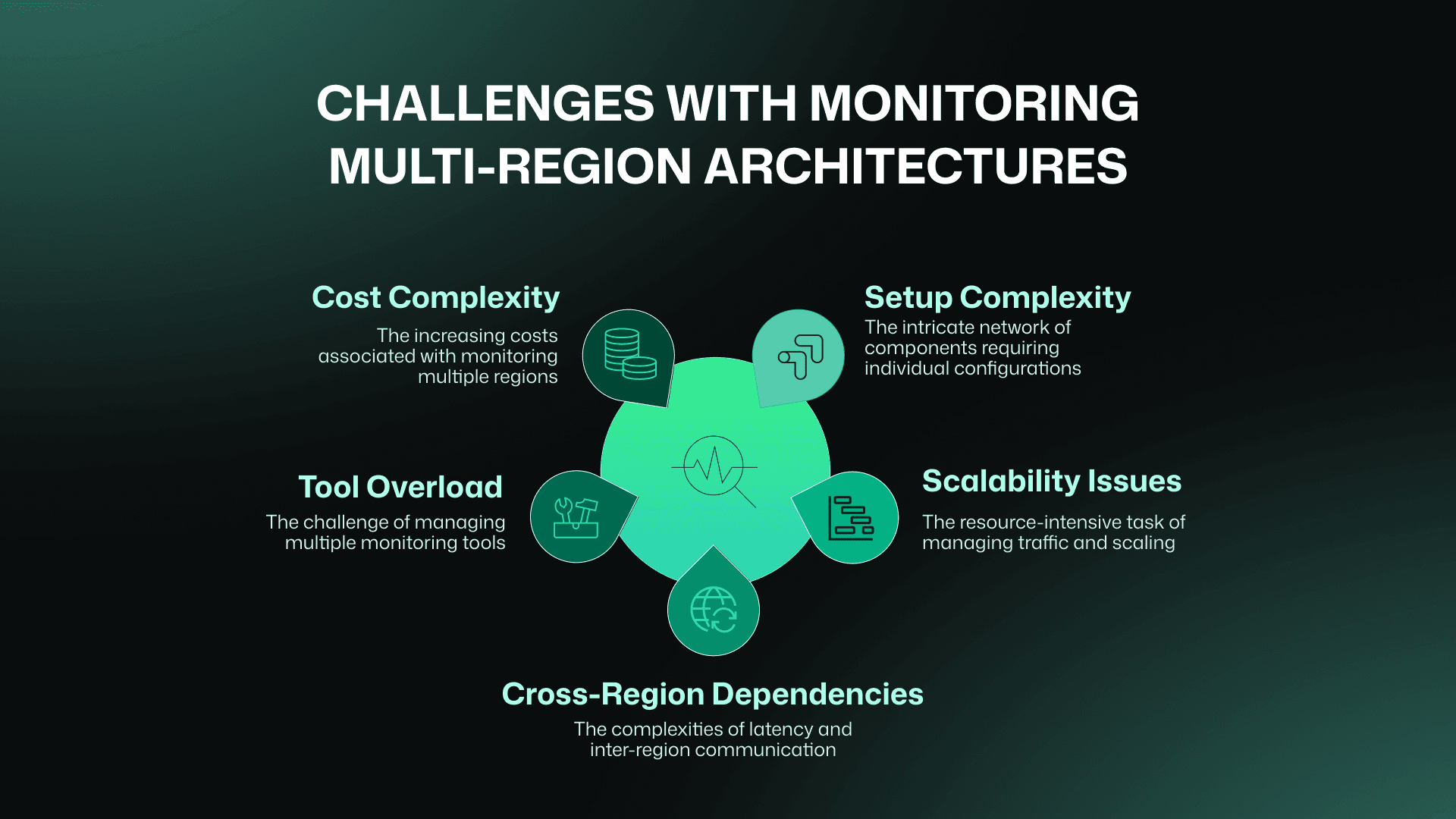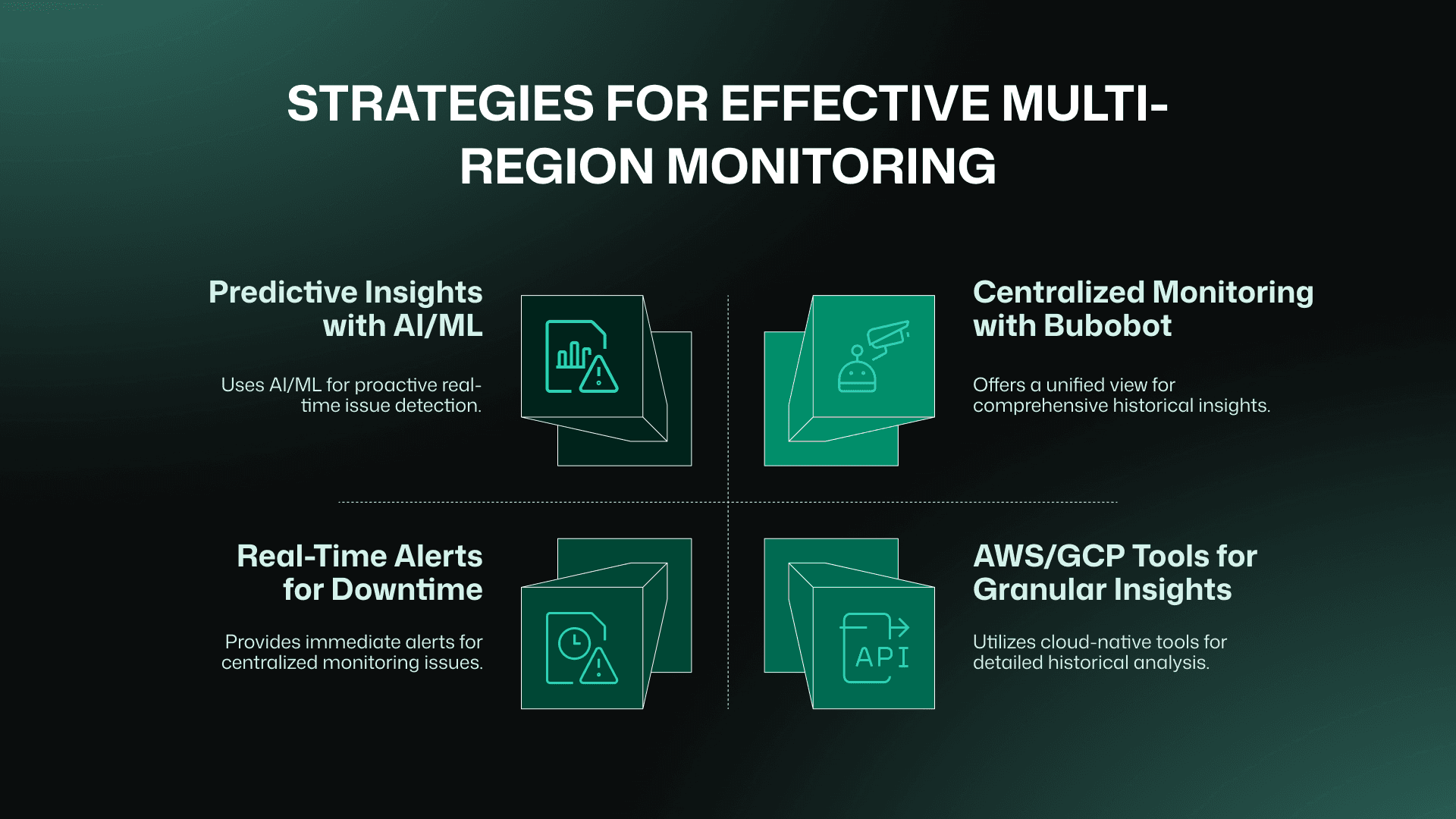Monitoring AWS/GCP Multi-Region Architectures: Strategies for High Availability and Uptime

1. Introduction
What happens if one AWS/GCP region goes offline tomorrow? Would your users notice? Worse, would they leave?
Uptime and high availability are non-negotiable for modern applications. Multi-region architectures are crucial for achieving this, but they also significantly complicate monitoring.
This article outlines the challenges and strategies for ensuring robust uptime monitoring across regions.
2. Monitoring Criteria for Multi-Region High Availability

To ensure high availability in a multi-region architecture, several key monitoring criteria must be considered:
- Regional Uptime Monitoring: Track the availability of each region. Are your core services running as expected in all regions?
- Failover Readiness: Are your failover mechanisms functioning correctly? Can traffic be seamlessly rerouted if a region experiences an outage?
- Latency and Response Times: Monitor latency across regions to ensure acceptable user experience and identify potential bottlenecks.
- Cross-Region Dependencies: Track the performance of inter-region communication to pinpoint issues related to data replication or service dependencies.
- Incident Detection: Proactively identify and alert on anomalies that could impact availability, such as sudden traffic spikes or resource exhaustion.
3. Challenges with Monitoring Multi-Region Architectures

Several challenges arise when monitoring applications deployed across multiple AWS/GCP regions:
- Setup Complexity: Multi-region deployments introduce numerous components (VPCs, subnets, load balancers) requiring individual monitoring configurations.
- Scalability Issues: Monitoring traffic distribution and scaling across multiple regions can be resource-intensive.
- Cross-Region Dependencies: Latency, replication, and inter-region communication introduce blind spots and make troubleshooting more difficult.
- Tool Overload: Juggling AWS/GCP native tools and third-party solutions can lead to fragmented monitoring data and increased complexity.
- Cost Complexity: Monitoring costs increase with the number of regions and the complexity of your infrastructure.
4. Strategies for Effective Multi-Region Monitoring

To effectively monitor your multi-region architecture, consider implementing the following strategies:
- Layered Monitoring Approach:
- Centralized Monitoring with Bubobot: Gain a unified view of your entire multi-region infrastructure, including uptime and latency across clouds and regions.
- Deep Dive with AWS/GCP Tools: Leverage AWS/GCP native tools for granular insights into specific components, such as database replication lag or scaling metrics.
- Why Combine Both: A layered approach provides both the breadth of a centralized view and the depth of cloud-native tools for comprehensive troubleshooting.
- Real-Time Alerts and Historical Trends:
- Real-Time Alerts: Receive immediate notifications for critical issues like downtime or performance degradation.
- Historical Trends: Analyze historical data to identify patterns, debug issues, and plan for future capacity needs. Visualize trends over time for a better understanding of performance fluctuations.
- Predictive Insights: Leverage AI/ML to identify potential future issues, such as upcoming traffic spikes or latency increases, allowing for proactive mitigation.
- Insights Delivered:
- Dashboards: Create customizable dashboards with region-specific filters to quickly assess uptime and latency across your entire multi-region deployment.
- Weekly Email Updates: Receive concise weekly summaries of key metrics, including historical trends and brief predictive insights.
5. Conclusion
Effectively monitoring multi-region architectures requires a balance of real-time insights and historical analysis. A layered approach, combining centralized monitoring with cloud-native tools, provides the necessary breadth and depth.
By leveraging real-time alerts, historical trend analysis, and predictive insights, you can proactively identify and address issues, ensuring maximum uptime and minimizing the impact of disruptions on your users.
Bubobot provide an advanced free uptime monitoring capabilities that simplify multi-region management
- Scalability and Setup Complexity: Bubobot supports a wide range of monitor types (HTTP, server, ping, port, SSL, etc.) without limitations, making it easy to scale your monitoring setup across multiple regions and easily add new monitors as your infrastructure grows.
- Cross-Region Dependencies: With a global network of monitoring workers, Bubobot provides accurate and timely insights into cross-region dependencies, helping you identify and resolve performance issues quickly.
- Tool Overload: Bubobot offers a seamless and intuitive user interface with a focus on high-quality and insightful data. We are actively developing integrations with Prometheus, AWS, and GCP, which will further simplify your monitoring setup and reduce the burden of managing multiple tools.
- Real-time Detection: With detection speeds as low as 20 seconds, Bubobot helps minimize downtime by ensuring rapid response to critical incidents, enabling rapid response to critical incidents and minimizing downtime.
< Add visual here (cover image): something fast, quick, high velocity —> minimize downtime >
Explore Bubobot today to simplify your multi-region monitoring and gain valuable insights into your AWS and GCP deployments.
#AWSMonitoring #GCPInsights